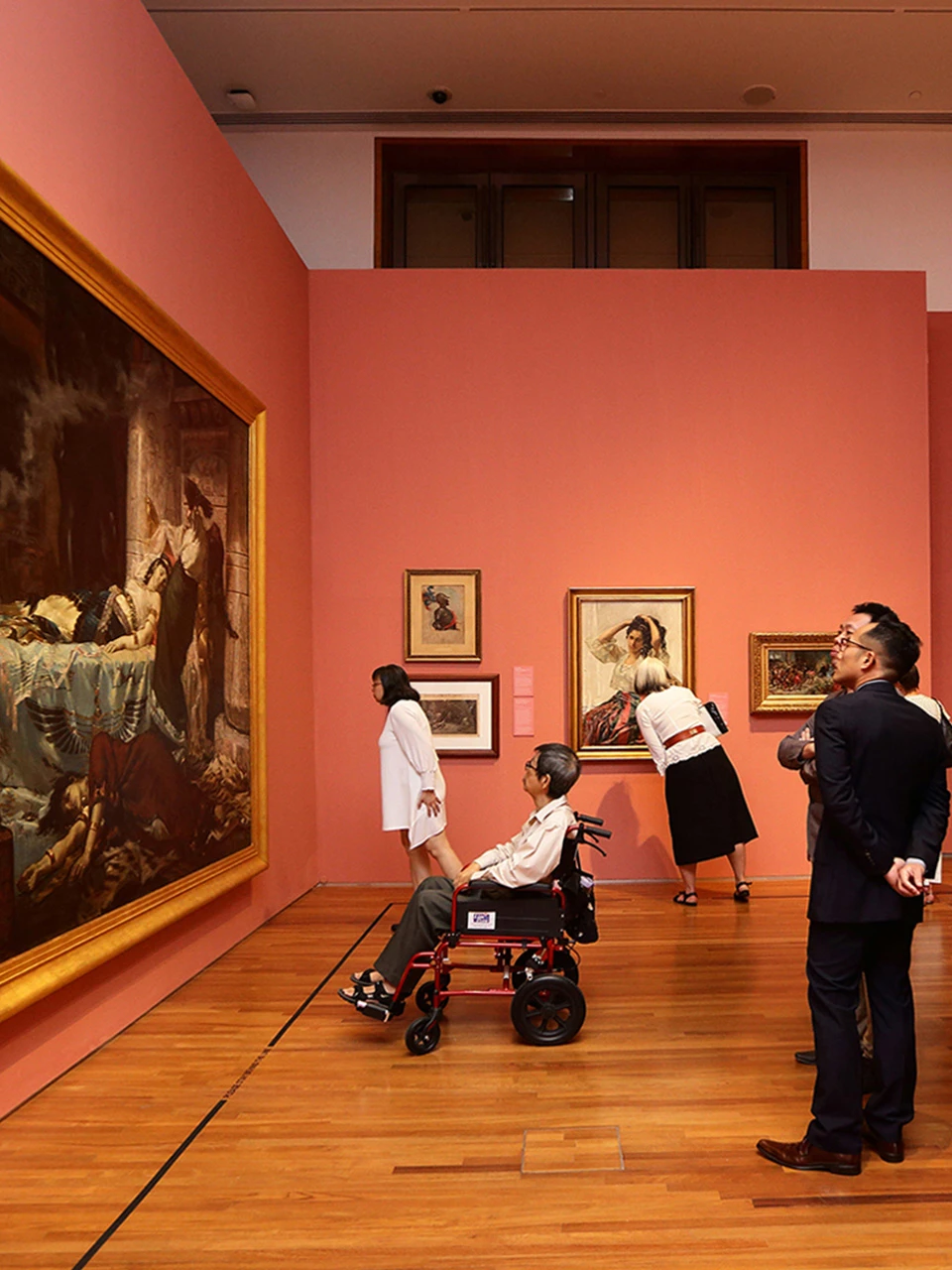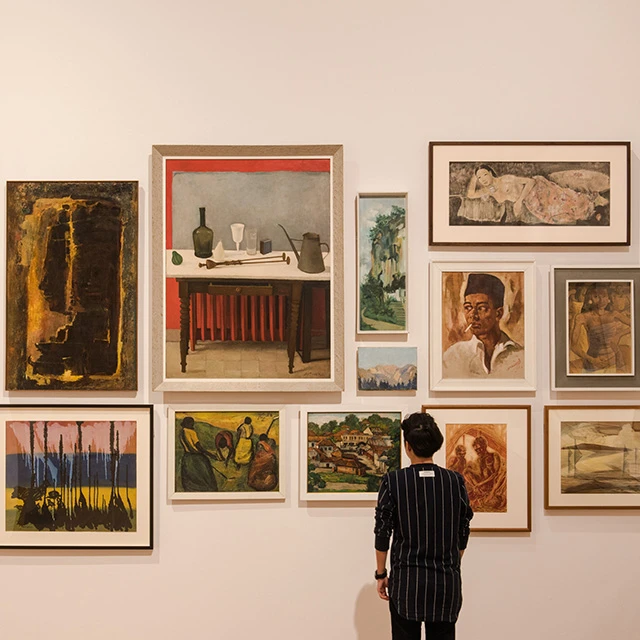Drastic cultural and political changes swept through Southeast Asia in the 19th century. Some artists and artisans began to use new tools, styles, and genres of art. How did oil painting fit in with the times? Explore the art that marked the beginning of a modern aesthetic.
Appreciating the Art of Art Forms – Why are there so many oil paintings?
Most art museums around the world have a good number of oil paintings. But why? Take a dive into the history of oil paintings and learn what makes them popular.
Share
So, you’ve stumbled into a gallery looking for art (or perhaps the loo), and what do you see but oil paintings here, oil paintings there, oil paintings everywhere!
While the conservative connoisseur might be delighted, the man-in-the-street visiting might wonder, “Why so many oil paintings?”
Take a dive into the history of oil paintings and learn what makes them popular.
Jump to a section:

You’re reading an adaptation of our booklet, The Honest Guide to Seeing Art, part 2. Pick up your free physical copy at the Gallery!
Oil painting through the years

How long has oil painting been around? The world’s earliest oil paintings – Buddhist cave paintings discovered in Afghanistan – were likely made in the 7th century.
Centuries after, perhaps, thanks to the Silk Road linking East and West, oil painting appeared in Europe where it became a dominant art form from the 14th century. It peaked during Renaissance in the 1400s – 1500s. Many of the oil paintings made by European artists during that time are now considered masterpieces.
Today, though the popularity of oil painting has dipped in the wake of new art trends, it remains well-loved as it offers a textural diversity and lustre unmatched by other painting media. With its slow drying property that enables layering and reworking, oil painting is perfect for ditherers and dawdlers.
The global demand of oil painting

From the 15th to the 20th century, several European nations competed to colonise and exploit as much of the world’s non-European population as they could. European oil painting piggy-backed on these colonisers as they spread across the globe.
Oil painting arrived in Southeast Asia between the 16th and 19th centuries:
- 16th century: Spanish to the Philippines; Portuguese to East Timor
- 18th century: Dutch to Indonesia
- 19th century: British to Malaya and Burma (Myanmar); French to Vietnam, Cambodia and Laos. Thailand, which staved off colonisation, over time also assimilated oil painting into its national artistic identity.
Adapting the art
Although Southeast Asia already had rich and diverse artistic heritage, the Europeans sought to depict the “exotic” scenes. Early oil paintings in the region were largely portraits and landscapes commissioned by colonial officials and wealthy patrons, and paintings of religious iconography commissioned by the Catholic church.
These were painted by visiting European artists or by locals trained in the medium. However, oil painting styles and techniques also came to Southeast Asia through the East and South Asia, and not just from the Europeans. While the medium was new, it was quickly combined with older forms of painting that were practiced in the region. Over time, local artists began using oils for their own creative expression.















